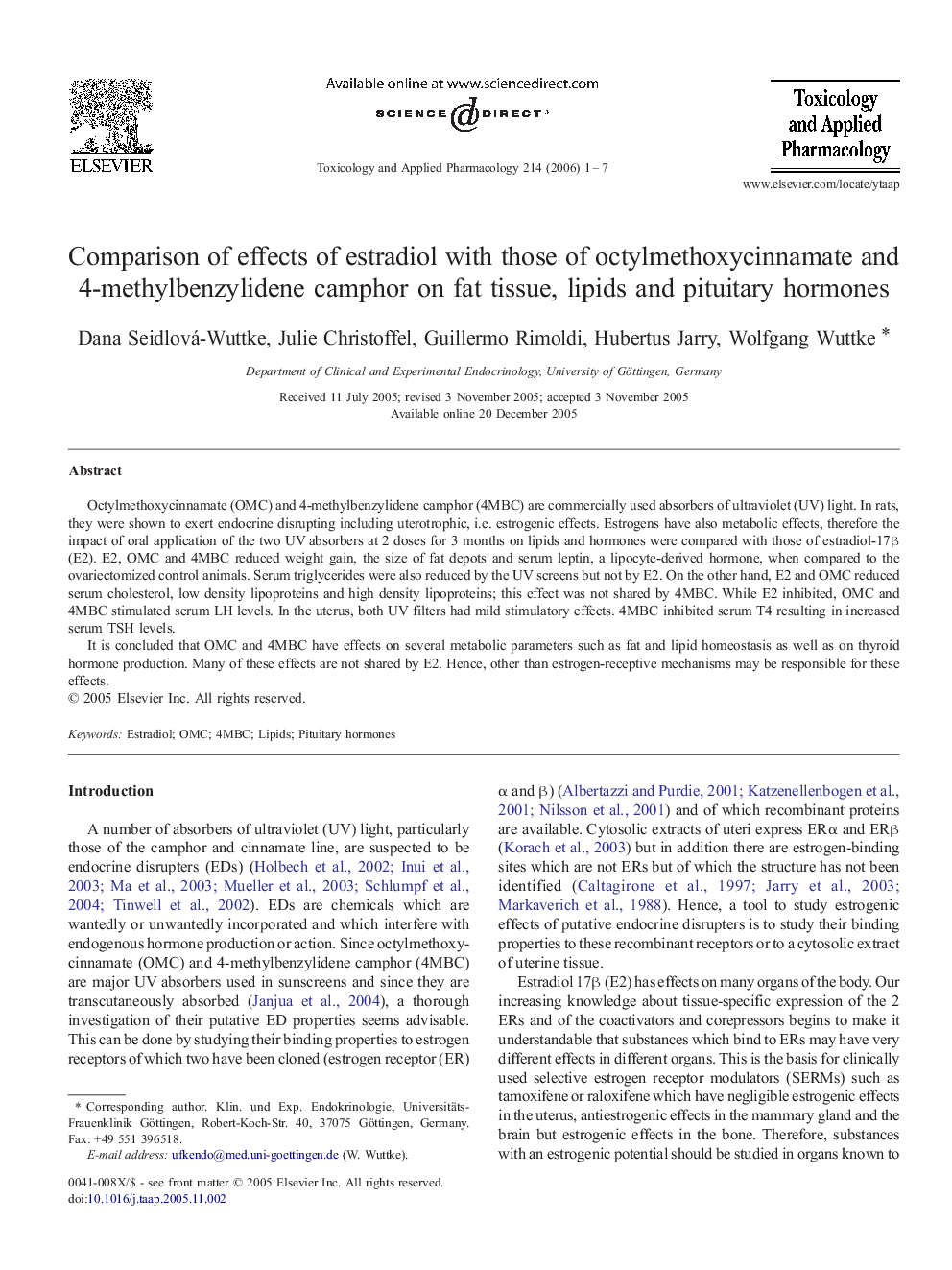| کد مقاله | کد نشریه | سال انتشار | مقاله انگلیسی | نسخه تمام متن |
|---|---|---|---|---|
| 2571312 | 1128627 | 2006 | 7 صفحه PDF | دانلود رایگان |

Octylmethoxycinnamate (OMC) and 4-methylbenzylidene camphor (4MBC) are commercially used absorbers of ultraviolet (UV) light. In rats, they were shown to exert endocrine disrupting including uterotrophic, i.e. estrogenic effects. Estrogens have also metabolic effects, therefore the impact of oral application of the two UV absorbers at 2 doses for 3 months on lipids and hormones were compared with those of estradiol-17β (E2). E2, OMC and 4MBC reduced weight gain, the size of fat depots and serum leptin, a lipocyte-derived hormone, when compared to the ovariectomized control animals. Serum triglycerides were also reduced by the UV screens but not by E2. On the other hand, E2 and OMC reduced serum cholesterol, low density lipoproteins and high density lipoproteins; this effect was not shared by 4MBC. While E2 inhibited, OMC and 4MBC stimulated serum LH levels. In the uterus, both UV filters had mild stimulatory effects. 4MBC inhibited serum T4 resulting in increased serum TSH levels.It is concluded that OMC and 4MBC have effects on several metabolic parameters such as fat and lipid homeostasis as well as on thyroid hormone production. Many of these effects are not shared by E2. Hence, other than estrogen-receptive mechanisms may be responsible for these effects.
Journal: Toxicology and Applied Pharmacology - Volume 214, Issue 1, 1 July 2006, Pages 1–7